How to Grow Basil (Easy Outdoor Method)
Learn how to grow basil with my practically no fail easy outdoor sowing method and how to maintain it for big, beautiful plants all through the summer.
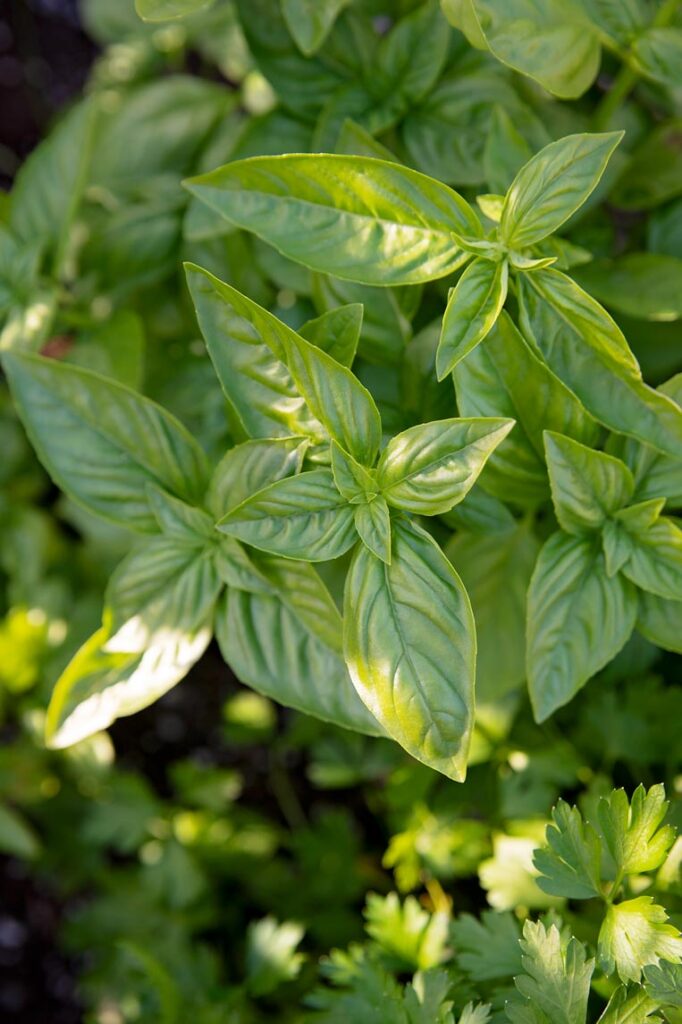
Herbs like basil, parsley and sage are incredibly easy to grow if you don’t make it too complicated.
I’ve been growing basil from seed for years and enjoy a bumper crop regularly. Let me show you how you can too.
Table of contents
- What basil to grow and where to get seeds
- The best kept secret for starting seeds, and it’s not inside
- When to start basil seeds
- Soil types for growing basil
- How much basil to plant
- How to transplant seedlings
- When is basil ready to harvest
- Keep basil growing strong
- Harvesting seeds for next year
- Great recipes for using basil
What basil to grow and where to get seeds
You can grow any type you like! The most common are Genovese and Sweet. I personally find the flavor of Genovese to be too much like licorice. Sweet is always my preference but there are other delicious ones like Thai basil, cinnamon, too.
Seeds are going to come up whether you buy them at the Dollar General or get heirloom ones from Baker Creek. If you want organic, look for that on the label but I personally don’t worry about it with the seeds themselves.
The best kept secret for starting seeds, and it’s not inside
Can I ask you to trust me? I’m going to tell you the secret to growing every single green plant you can dream up: Milk jugs.
I learned a technique called winter sowing or milk jug sowing four years ago and have diligently grown everything from bell peppers to berry plants with this method. You can use it for growing basil too. 99% of what I plant comes up and the sun and greenhouse effect does all the work.
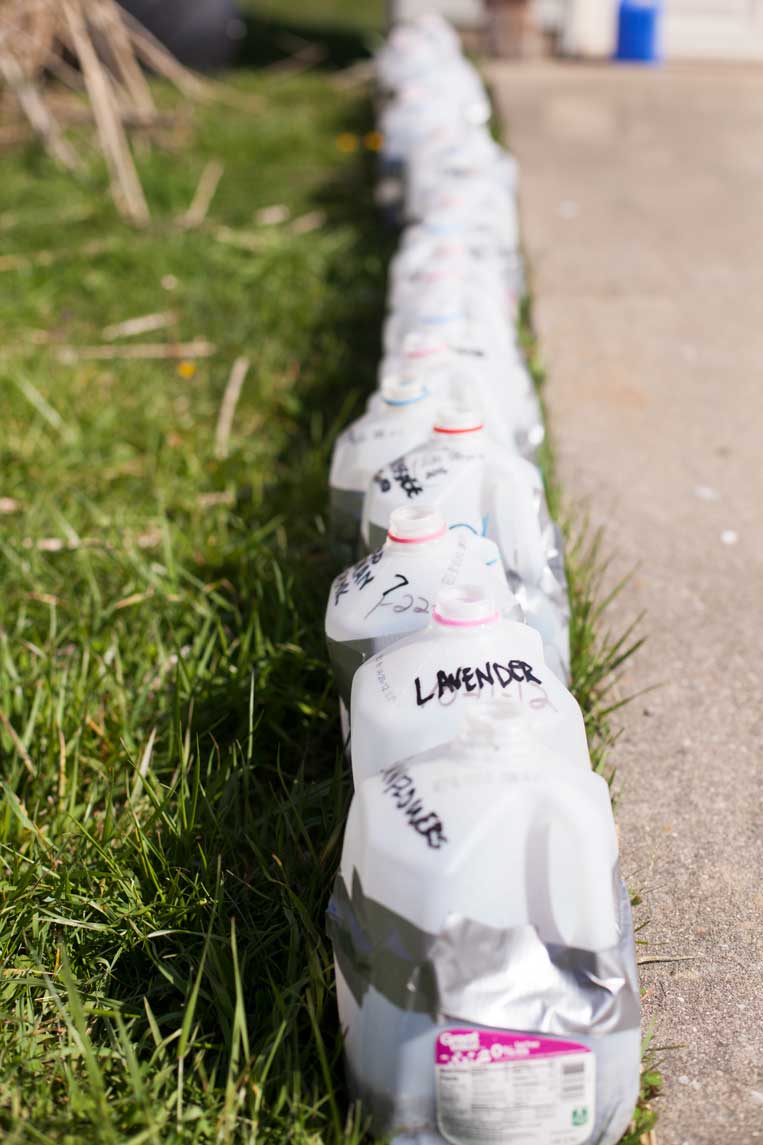
I don’t know why anyone bothers with seed trays, grow lights and heating pads when you can use a milk jug or 2-liter bottle. You MUST follow the rules though and you can read all the details here.
When to start basil seeds
Know your last frost date
If you use my method, start your seeds outdoors about 7 weeks before you want to plant them. Basil should be planted about 2 weeks after your last frost. Don’t know when that is? Check yours with the Farmer’s Almanac. Then count backwards to decide when to sow your seeds.
Know your growing zone
You’ll also want to know your zone. Certain plants grow in certain zones. There’s a reason lemons don’t grow in Alaska. If you try to grow plants not approved for your zone, your plants will struggle.
Soil types for growing basil
Like with any plant, you want a well drained but also nutrient rich soil. Basil doesn’t like to dry out so make sure you water regularly. You don’t want to saturate it constantly but a light daily watering will be fine.
If you are growing your basil in pots, Happy Frog soil is my favorite and it’s also one brand I like for my milk jugs. DO NOT TRY TO GROW BASIL IN SEED STARTING MIX.

I don’t really do a lot of fertilizing through the season, but if you plan to harvest leaves heavily, choose an organic fertilizer, add good compost or use a compost tea on your plants once a week.
My basil is much happier in a pot or raised bed with loose soil than in the harder red clay of my Kentucky garden or just stuck in the ground.
How much basil to plant
A family of four who just wants some for sprinkling over recipes would be fine with just four plants.
If you want to make batches of pesto or other basil-heavy recipes for freezing or preserving, plan for at least 12 plants.
How to transplant seedlings
I grow mine in milk jugs so I simply tilt the whole lot–soil and all gently into my hand and then turn it back over and put it in the hole. I leave all my plants in a clump of about 8 or so. You can gently separate them if needed but I never do. I don’t want to risk upsetting their roots too much.
When is basil ready to harvest
When basil plants are 6 to 8 inches tall, start picking leaves from the top at the tip of the stems. This will encourage your basil to branch and make more leaves. When your plants are small, don’t pick too many leaves off. Just a handful at a time until they are larger.
Keep basil growing strong
Basil plants will stop growing if you let the flowers grow. It will put all its energy in to growing seeds which are in the flowers and you’ll lose many weeks of delicious harvests.
Flower heads start out looking like small firm buds. They will develop on the end leaves right in the center. When you see them, just pinch them out. If it’s close to frost time, you can stop pinching them out if you want to harvest seeds for next year.
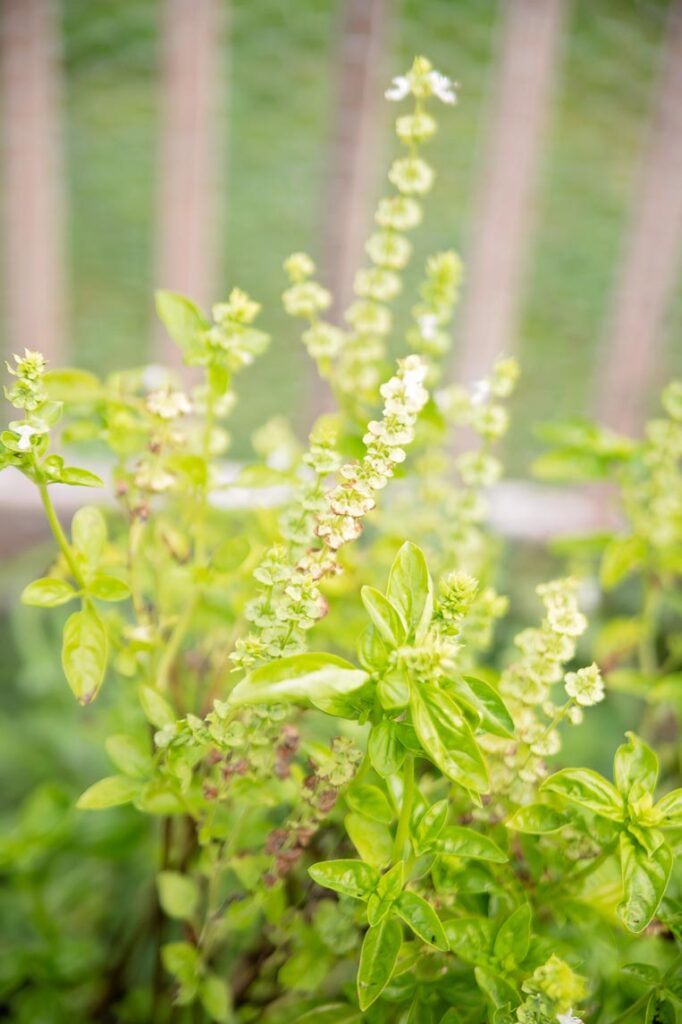
Harvesting seeds for next year
Keeping seeds is so simple and saves a ton of money. Just let your plants flower and turn brown. I usually stop pinching out the blooms on my basil a couple of weeks before our last frost and just let the seed pods grow.
Let them turn brown, then strip the flower pods from the stem. Inside are the tiny seeds. The seeds should be black and not light brown.

I store and replant the entire pod of seeds. If you want to pick all those tiny ones out of the pods, feel free but I’ll just stick the whole thing in the soil next year and be done.
If your pods aren’t totally dry, leave them out in a well ventilated area until they are (a couple of days usually), then store them. I put mine in an envelope and put them in a cabinet until spring. There’s no need to refrigerate or freeze them.
Great recipes for using basil
Basil Pesto
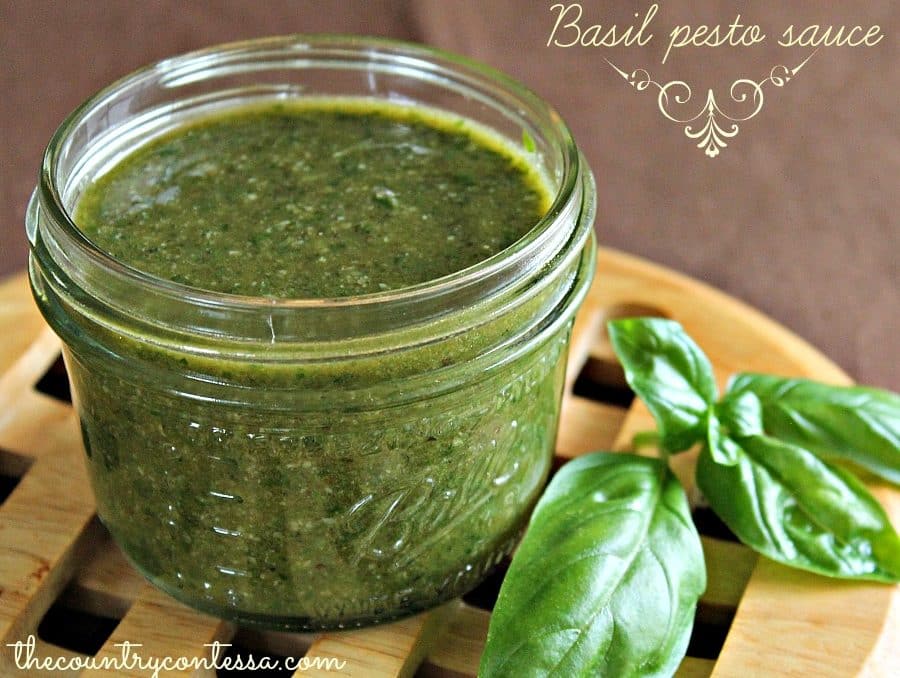
Homemade pasta sauce

Chicken pesto wraps

One Pan Tuscan Chicken Skillet
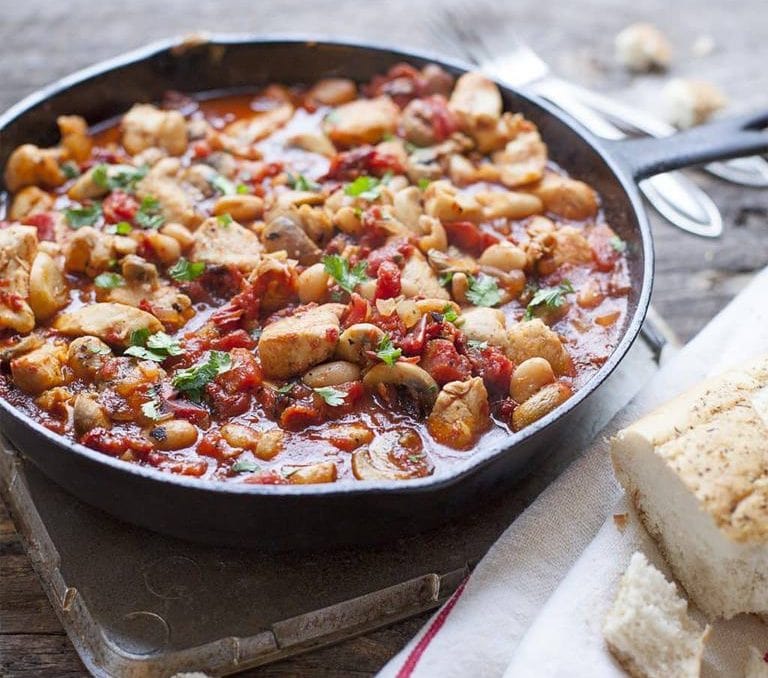
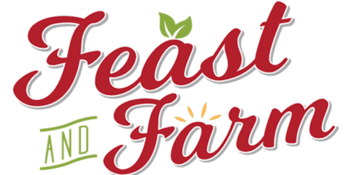

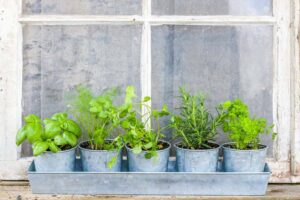
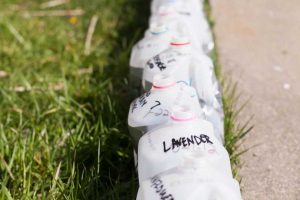

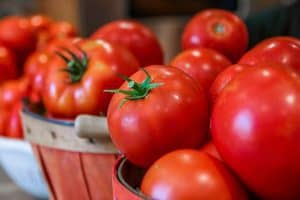

About the Author
Rachel Ballard, RN, BSN brings more than 20 years of professional nursing expertise to Feast and Farm. With a love for nutrient dense foods that support wellness, she works to distill complex health information and current trends into recipes that fuel the best version of yourself. Read more about Rachel here.